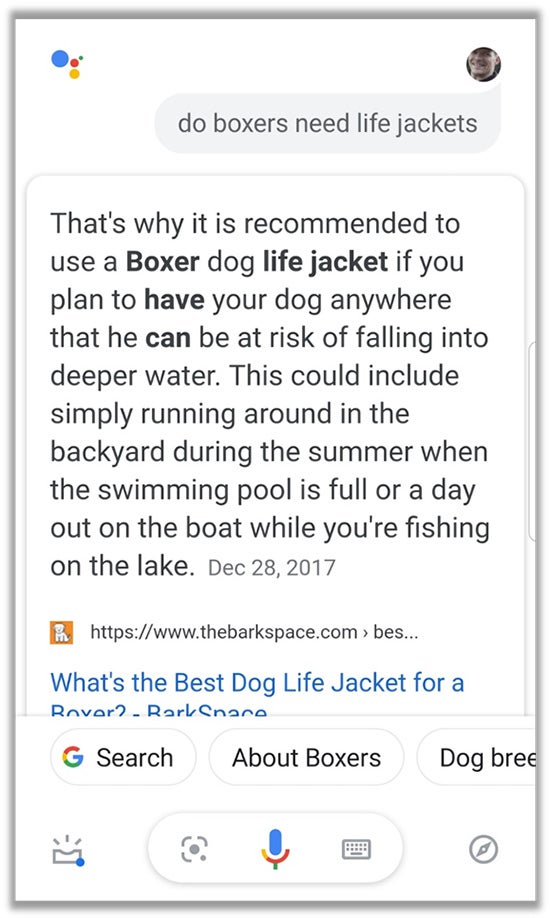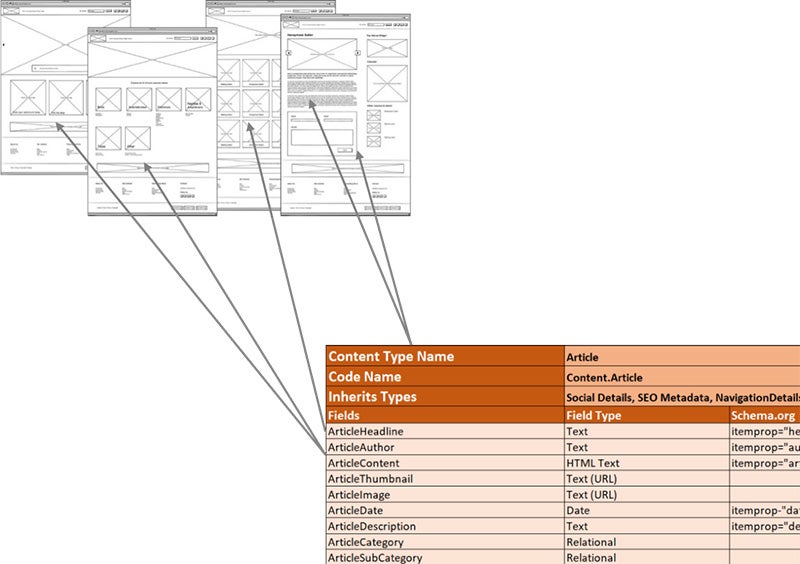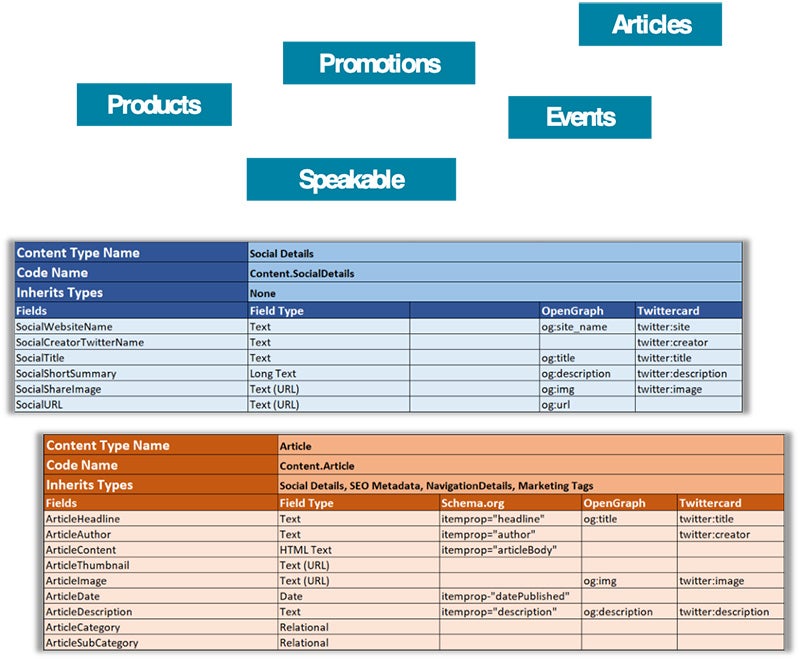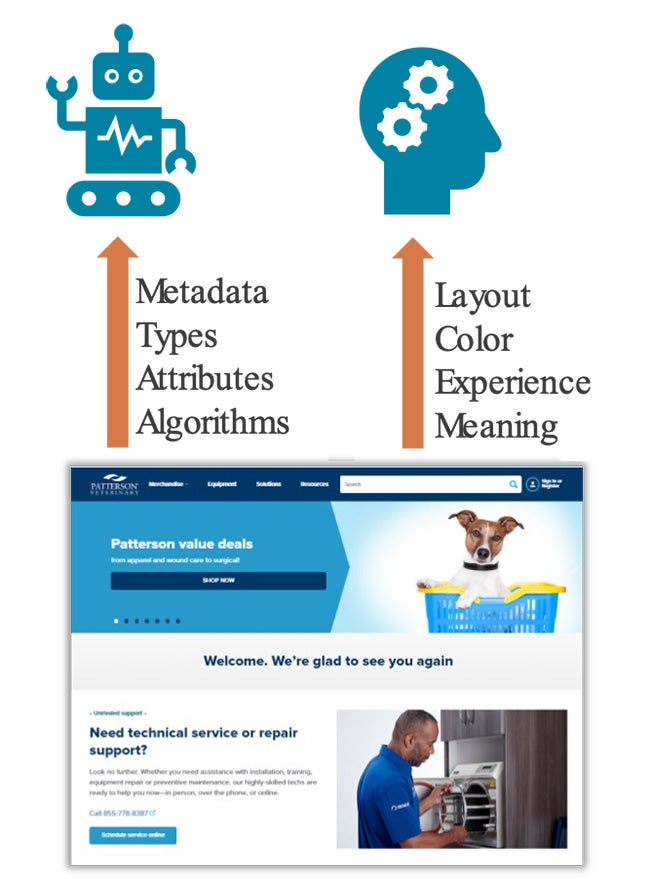
In my recent article, A Headless Architecture Enables Enterprise Adoption of Kentico EMS, I mentioned two strategic goals of a headless architecture: One is to future-proof the technology stack, and the other is to deliver content to a growing list of content channels including web, email, mobile apps, and chatbots. A third major goal you can achieve by using a headless CMS is to provide meaningful, structured content to the public platforms where our audience is already engaged: platforms like Google search, Siri, and LinkedIn. This goal is a natural fit for Kentico Kontent, which by design demands defining meaningful structured content, as well as for Kentico EMS, which has always been a content-centric platform.
Where are our customers?
There was a time when customers engaged content directly in the websites we created, so it was natural to focus on our websites’ design, layout, and presentation. As long as end users had a compelling experience, the content did not need to be structured. However, these days, potential customers are now engaging content in the new information infrastructure of public content channels, like Google search, voice search, and social media. They won’t even discover our websites, until they have first found our content in these growing channels.
When users look for information, they typically start with a Google or voice search. Gone are the days of clicking through a list of web pages for an answer. Users are less and less likely to discover a site just because it appeared within the top few search results. Instead customers look for information in a featured search snippet, the coveted zero spot in Google search results. If they don't find what they're looking for on the first try, they will typically revise their search instead of reviewing a list of pages. Likewise, if users perform a voice search, they are looking for a quick answer and if they don't get it, they will simply retry the search.
Additionally, customer decisions are influenced more and more by content they receive through social media, such as LinkedIn and Twitter, where social networks play a similar role to Google search algorithms. They act like brokers, controlling the content users will discover.

You might be tempted to dismiss the importance of these evolving trends in how people are engaging content. For example, you may wonder if this even matters for B2B marketing. The answer is most definitely! In fact, 75% of B2B buyers and 84% of C-level and VP B2B decision makers use social media to influence purchase decisions. Additionally, 42% of researchers use a mobile device during the B2B purchasing process. Even B2B buyers are relying on social networks and search bots to broker the information they engage.
These changes mean that it is becoming harder and harder to get our content in front of human eyes. In web and voice searches, there is a new winner-take-all problem. People are looking for the single best answer that appears as a search snippet or is spoken back to them in a voice search. It's becoming less common for someone to click through multiple search results to find information. If your content doesn't appear at the top, it might as well not exist. Likewise, in social media, if your content isn't being liked and shared it’s not going to reach your audience.
How does Kentico help?
Both Kentico EMS and Kentico Kontent excel at providing structured content that enables feeding social media platforms and search bots, allowing information to be easily consumed and surfaced in these platforms. Your best hope for getting content surfaced as a featured snippet in Google results is for it to be supported by structured metadata in your website. Structured metadata for common schema.org types like Event, Organization, Person, and Product, must be shared by embedding it using JSON-LD or RDFa defined attributes.
Here’s a simple example that uses JSON-LD to embed organization data:
<script type="application/ld+json">
{
"@context": "https://schema.org",
"@type": "Organization",
"url": "https://bluemodus.com/",
"name": "BlueModus",
"contactPoint": {
"@type": "ContactPoint",
"telephone": "+1-303-759-2100",
"contactType": "Sales"
}
}
</script>To enable a website to embed structured content, it needs to be built on top of meaningful, semantic, content models. For example, when a website is rendering a headline, it needs to know if that headline is a name of a product, event, or service. Gone are the days when we just need to define the font, style, and position. Kentico EMS and Kentico Kontent are perfect to achieve this, because the process of building a website starts with defining the content types and structures. In fact, Kentico EMS has always had a content-centric architecture built around the concept of page types and fields, so it’s natural to define an article with the fields necessary for embedding schema.org metadata, like an article’s name, description, and author.

In the same way, it’s natural to add fields to a Kentico page type to support the content needed for Open Graph and Twitter Card metadata. This allows your content to be shared in social networks using rich, compelling snippets, which increases the amount of content being liked and shared by your audience. Because content is more likely to be discovered in a search snippet, voice search, or social media platform than in your own website, Kentico’s content-centric approach is an excellent foundation for reaching potential customers in those channels.
Protect the Master Content Model
We've learned a few lessons in building websites that provide structured content to search bots and social media platforms. The first lesson I'd like to share is the importance of protecting the master content model.
Read our CONTENT MODELING FACTSHEET to learn more about this future-proofing concept.
Adopting a content-centric platform like Kentico EMS or Kentico Kontent doesn’t automatically bring your content to the places users are already engaged. To enable a website to embed meaningful, structured metadata, the website needs to be built using a meaningful, semantic, structured content model. Furthermore, if you want your headless CMS to be capable of sharing content with other channels including email, mobile apps, and chatbots, this structured content model needs to be stable enough to be understood by all channels. This core, structured content definition, or master content model, defines the types of content an organization cares about, the types of content meaningful to search bots and social media platforms, and the types and attributes that are useful across multiple content channels. Because this master content model becomes a central foundation for multiple systems, it needs to be carefully managed, to maintain its usefulness to everyone, and to prevent content from being locked in silos.
In a real-world implementation, you will probably have a master content model that defines core content types that must be stable, managed, and protected. This includes types like articles, services, products, and locations. However, you probably need many auxiliary content types as well, web-specific content types such as sliders, media galleries, teasers, and calls to action. It's important to recognize that while you will need a master content model that is carefully managed, you will also need to maintain single-channel content models that can be flexible and change frequently.
For example, a website would use content from both of these content models by merging them together. A web page that displays information about an event would display core event data defined in the master content model. However, it would also add related teasers, ads, and other extra content that comes from the web-only content model. This important distinction allows the careful protection of the master content model, while still allowing flexibility and quick changes that are valued in a website.

Remember the Robots
The second important lesson is to remember the robots. Your whole team needs to understand the goal of bringing content to customers in the public information platforms like Google and LinkedIn. We are no longer in the business of simply creating new, pretty websites. Surprisingly, this is a big challenge, because people naturally invest themselves in the design process. We love style, color, and user experiences. We have whole disciplines focused on these aspects of projects. However, we cannot neglect adding structured content to websites as we develop them. If we postpone this process, we are postponing the element that helps new customers find our sites. This is such an important aspect of any new development project that it should be integrated from the beginning, in the same way that a site's branding and layout are integral to the entire project. Delivering a site without structured content amounts to delivering a site that few new users will find.

In Summary
If your organization is beginning a new website project, I encourage you to consider your website as much more than a user experience platform. Increasingly, it is also a platform for getting your content into the public information infrastructure and social media networks that already have your audience’s attention. From the beginning, define a master content model and encourage the whole team to understand the value and purpose of structured content.
If you’d like help turning your website into a hub that delivers content to the places your customers are already engaged, contact BlueModus today, we'd be glad to help.
Have questions on how to get the most out of your Kentico implementation? Drop me a line on Twitter (@HeyMikeWills), or view my other articles here.









